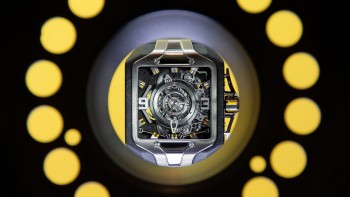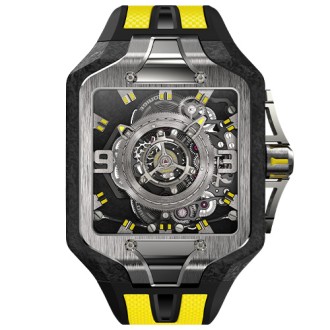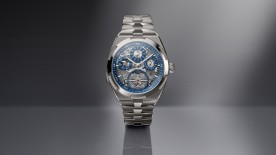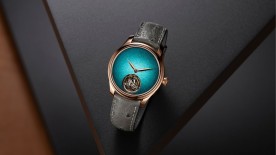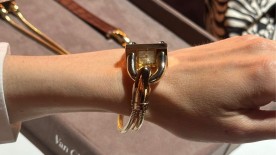Lorige is a young and daring Franco-Swiss watch brand, created in 2018 after the encounter in Le Mans of two motorsport enthusiasts Emeric Paraud and Clément Etienvre, their objective being to arouse and transmit emotions similar to those felt on racing tracks through their watches. They were able to find investments for the launch of their production and surround themselves with suppliers recognized in the watch industry, such as Timeless for the movements and Régence Production for the external parts of the watch (bezel, crown, hands...).
A set of brakes from Ayrton Senna’s formula 1 car
For this model, Lorige delves into the history of motor racing to create an unusual timepiece whose case is machined from the carbon/carbon brake pads of the McLaren MP4/8 driven by Ayrton Senna during the 1993 season. Ayrton Senna, a three-time F1 world champion, finished second in that season after an epic duel with Frenchman Alain Prost. Lorige’s mission was to design and manufacture a model worthy of this automotive history, which can only be produced once, and in only eight pieces. It took more than three years for the two partners to patent the specific techniques of reprocessing the carbon/ carbon from the racing car’s brakes to transform them into watch cases.
Exceptional piece, exceptional movement
Lorige decided to develop a first Flying Central Tourbillon, based on the work of Dominique Renaud and the expertise of the late Pierre Favre. The LOR-TC01 (TC for Tourbillon Central) movement, designed in collaboration with Timeless Unité Renaud-Favre, is based on a specification that is very simple in appearance but highly complex in its manufacturing. Its condensed structure and different finishes accentuate the lines of each element without facilitating the assembly of the movement’s 323 components. The upper cage of the tourbillon is made of titanium, which further complicates the process of the four finishes, especially on such a small surface, the piece measures only a diameter of 13.6 mm.
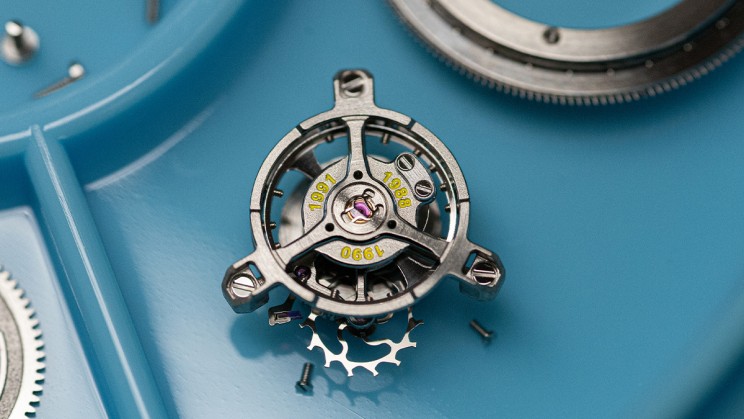
Fine watchmaking movement
The movement is thus a true fine watchmaking caliber, as evidenced by the attention to detail such as the chamfering of the lower bridge’s wheels to avoid interference with other gears, or the barrels’ teeth machined after the treatment of the component. All these steps add to the complexity of the movement’s manufacture.
Obviously, Lorige wanted to imbue the piece with certain codes and details of the world to which it refers. Thus, the tourbillon is placed in the center of the watch like the driver inside the racing car, the two barrels adopt the aesthetic design of the Speedline rims of the time, and the movement is fixed by «tie rods», like those on the chassis of single-seaters.
« This movement, which we created together with Pierre Favre, is a real technical challenge achieved by a fantastic team of watchmakers and technicians. Its fabulous central aerial architecture has on the one hand a suspended tourbillon, and on the other hand an analog display of hours and minutes with ball bearing discs. Each of them receives, in a totally independent way, its own energy coming from one of the two dedicated barrels. All this was done with the idea of smoothing the forces and chronometric disturbances, true to the very spirit of the tourbillon. The Lorige designers behind this magnificent project have succeeded in bringing together several high- tech worlds. Indeed, the case of the watch is machined directly from the carbon/carbon of the brake pads used on an extraordinary car! The whole thing brings a part of history and dream... »
Dominique Renaud, watchmaking developer
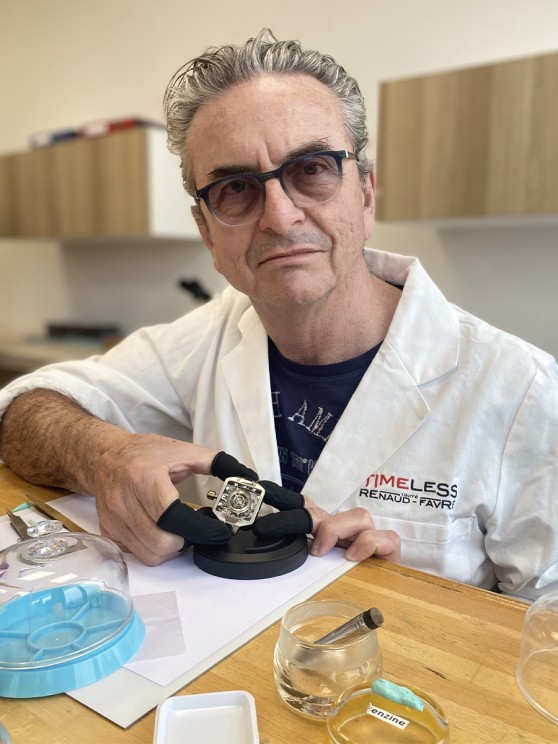
There are also nods to history, for example, the three Formula 1 world championships won by the Brazilian driver are engraved in the upper titanium cage of the tourbillon, as well as reminders of his mythical helmet’s yellow color, and the 93-hour power reserve even refers to the year of the carbon/carbon brakes used to shape the cases. The white gold bezel also recalls the curves of the F1 cars during the 90s. So many details that give it its character, which can be discovered as you walk through this spectacular piece.
Carbon/carbon: an extreme material
Three years of R&D were necessary to find a way allowing to reprocess the material, to make it waterproof and to be able to machine it while having a finish worthy of watchmaking... a real challenge!
The reprocessing of carbon/carbon is patented by Lorige. Because of the material’s low resin composition, carbon/ carbon does not allow it to be used in its normal state to manufacture watch cases. Unlike the main carbons used in watchmaking (forged, TPT, etc.), Lorige had to reprocess the material to make it denser and therefore waterproof, whereas a forged carbon can be machined directly without any reprocessing step.
Each Lorige carbon case requires more than 30 hours of manufacturing time, with about 10 different steps, 5 complex machining phases, about 10 tools per phase, including 0.2 mm milling cutters. Each case is unique in two ways: the random weave of the carbon fibers in the brake pads and depending on the year of the brake pad’s production, even the style of the fibers is different (straight fibers, curved fibers...). The density of carbon makes it a very light material, a Lorige case weighs only a few grams. It took more than three years for the two partners to patent the specific techniques of reprocessing the carbon/ carbon from the racing car’s brakes to transform them into watch cases.
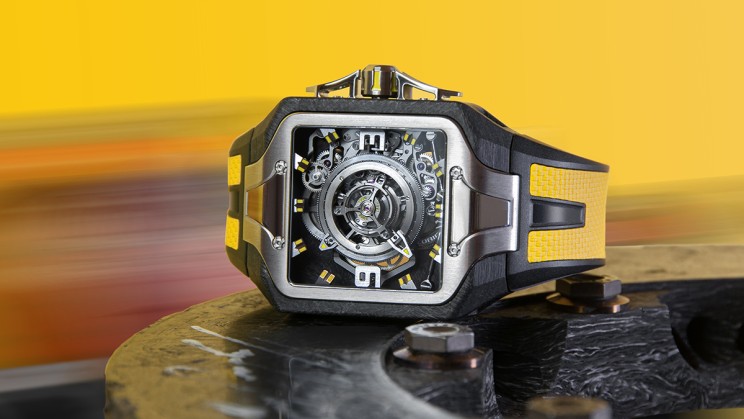
An edition of 8 pieces only
Only Eight AS-01 watches will be produced because the dimensions of the case, which measures 40 x 50 mm, are machined from only eight brake pads from the McLaren MP4/8 driven in 1993 by the legendary Ayrton Senna. In that year, the brake pads were 67 mm wide and 53 mm high, allowing only one carbon case to be machined from each pad.
Witnesses to a mythical era in world motorsport, only eight lucky owners will be able to wear a genuine piece of history on their wrists.
